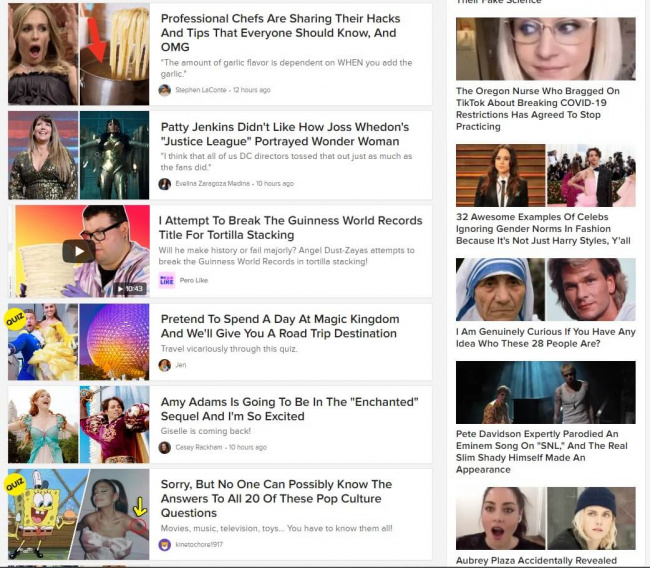Definition
Clickbait is a term that refers to online content that has a headline whose main purpose is to get web users to click on the linked webpage. The clickbait headline is usually misleading, often over-exaggerating the content’s emotional impact. While it is often thought of as a deceptive marketing tactic, it is one of the most effective marketing strategies when it comes to driving up a webpage’s view count. Proponents of the tactic, especially in the marketing field, insist that a headline can be catchy and ‘unconventional’ without misrepresenting the content it is linking to.
How clickbait works
The effectiveness of clickbait comes from how the human brain is wired, we are naturally curious beings. Clickbait engages this curiosity by promising information of value, once a user clicks on the provided link. Clickbait understands how human beings are emotion-driven; they leverage this by creating headlines that engage the reader’s anger, joy, outrage, surprise, fear, and sadness.
A good example is a news headline promising ‘shocking’ revelations about a politician’s ‘disgusting’ policy position. This media will attract clicks, especially if the politician is a polarizing figure. Clickbait is not a new phenomenon, yet it still works. This is because it engages our most primal emotional responses.
Common elements
While every single clickbait headline will not contain all the elements listed below, most include 2- 3 of these characteristics.
Surprise
Surprise is one of the most common clickbait characteristics. Everybody wants to see something new, and clickbait usually leverages this curiosity. This is why titles such as ‘Shocking revelations about the lives of past UK Prime Ministers’ are so common online. Users don’t click to learn about past UK prime ministers, they click to discover these ‘shocking’ details that will surprise them.
Cliff hanger
Cliffhanger titles work by creating a curiosity gap. They give readers a small bit of information that encourages them to learn more by clicking on the content. A good example of this is: ‘A teacher asked students about their most memorable day; you won’t believe what one student answered’. The title has already teased part of the content; readers know it is about a student story, they are now curious as to how the story could be shocking enough to warrant news or media coverage.
Numbers
Clickbait works by managing a reader’s expectations, and numbers are an effective way to achieve this. Imagine content that is concerned with discipline violations in a certain college fraternity. If the title just mentions that the content will cover the fraternity’s discipline violations, it might not attract many clicks. Most web users expect fraternities to attract a few violations. If the headline is ‘How a fraternity racked up 40 disciplinary violations in a single semester’ then it seems more interesting. It is not about the violations, but the surprisingly high number of violations.
Superlatives
Superlatives immediately attract attention. A person might not be interested in gardening, but chances are, they might click on an article on the ‘largest’ pumpkin ever harvested or the oldest horse in the world. Superlatives suggest that this is not just ‘run of the mill’ content, this is content that covers issues of significance.
Striking call to action
Clickbait is all about standing out. Having a striking call to action is an effective strategy for a business to differentiate itself. Consider the following two headlines: Click here to learn more about tax deductions or Save money on your tax bill here. Both could be linking to the same content, but the second one will attract more users to click. This is because the call to action is striking, and it appeals directly to the user.
Visual Baits
There is no better way to attract attention than through engaging visuals. This is a rule in marketing that also applies to clickbait content. Adding sensationalist imagery can attract more clicks. Depending on the content, it can be effective to include imagery with sexual innuendo, violence, cute animals, etc.
Emojis and internet slang
This is a strategy that works best when the target audience is younger, internet-savvy readers. Emojis and internet slang shows that one identifies with their culture and that the content linked is ‘hip’ and relevant.

Screenshot with clickbait headlines of buzzfeed.com
Criticism of Clickbait
One of the main criticisms of incorporating clickbait strategies in a brand’s marketing efforts is the negative connotations that clickbait has in the market. Clickbait has been associated with fake news and ethically bankrupt media publications. Using clickbait is thought of as a desperate last resort measure to use deception to attract readers. While the brand’s usage might not include deception, the strategy is somewhat ‘tarnished’ in the court of public opinion.
The whole point of marketing is to attract new clients, retain the existing client base, and build a generally positive brand reputation in the markets the business operates in. Clickbait can result in outcomes that go against these marketing objectives. When responsibly deployed, it can lead to an organization’s brand recognition spreading at ‘viral’ speeds. But, it is a very high-risk marketing strategy.
